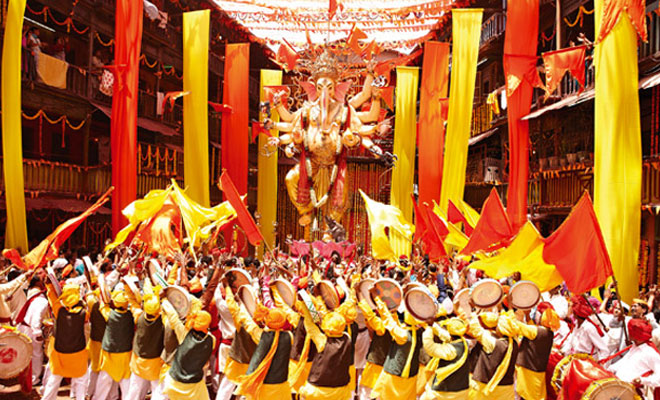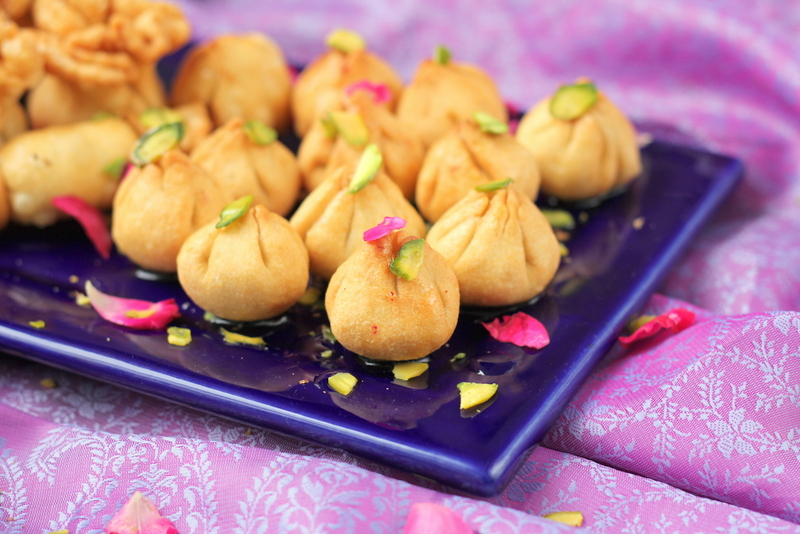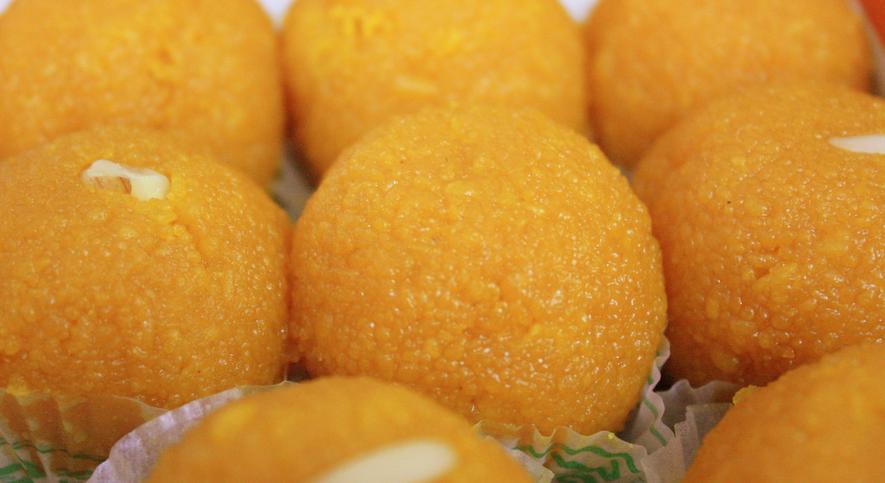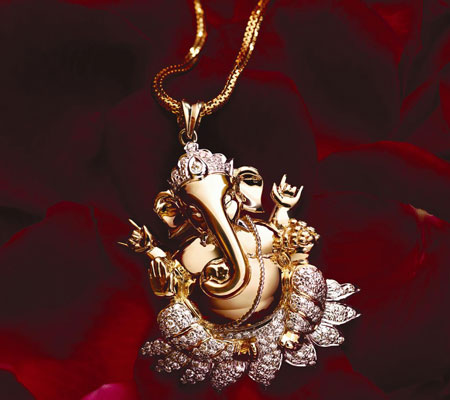Ganesh Chaturthi is one of the most awaited Hindu festivals all over India and especially Maharashtra. It is marked as the birthday of the “Vigana Harta “(remover of obstacles), the mythological name for Lord Ganesha. On this enthusiastic day, the devotees of the Lord offer prayers to the deity and seek his blessings for better knowledge and wisdom.
To understand this deep rooted auspicious occasion better, a thought-provoking history of the festival is significant.

The fascinating birth tale of Ganesha
Ganesha, one of the most lovable Indian God has an interesting birth story. It is believed that he was formed with the paste that Goddess Parvati used on her body before taking birth. She formed a sculpture with the paste and infused life in that figure asking him to guard the entrance of her bathroom. On returning of God Shiva to his abode, he was abruptly stopped by the figure created and in extreme rage struck off his head to discover that he has killed Parvati’s son.
The incident filled Parvati in utter grief and on requesting Shiva to return her son, he sent his attendants (ganas) to chop the head of the first living animal they find and bring it to him. They bought the head of an elephant and it was fixed restoring the figure back to life. Lord Shiva named him as “Ganpati,” Gan meaning hosts and Pati meaning Chief. Ganpati was blessed to be worshipped before every venture.
History or the story of Ganesh Chaturthi
It is believed that an association between Ganesh and chaturthi has been established due to his birth on the fourth day (chaturthi) of the bright fortnight of the Hindu lunar month of Magh. Thus, the festival is named as Ganesh Chaturthi and is dedicated to the worship of Lord Ganesha on the Chaturthi day.
Ganesh Chaturthi celebrations have been traced back since the days of Maratha rulers: Satavahana, Chalukya and Rashtrakuta. These celebrations were initiated by the great Maratha ruler, Chatrapati Shivaji Maharaja to promote culture and nationalism. The celebration remained a family affair from 1818 to 1892. However, in 1893, Lokmanya Tilak began to organise the festival as a social and religious function. He started the putting of large public images of Ganesha in pavilions and their immersion on the 10th day.
The customs and rituals
- Two to three months before the festival, the preparation and creation of clay models by especially skilled artisans is started. The Lord is depicted in various poses and the height varies from ¾ inch to over 25 feet.
- A day before the Ganesh Chaturthi celebration, the house is cleaned and white washed, especially the place where the idol is to be placed, to attain a sense of purity. The idol is carried to the place with the face covered with a saffron cloth, accompanied by chanting and sound of cymbals.
- In the evening of the first day of Ganesh Chaturthi, the idol is installed in the place of worship, i.e., the sthapana takes place. Rituals are performed to fill the idol with life and are followed by traditional puja. The puja is performed with devotional chanting and Ganesh Aarti. During the puja, modak- Ganpati’s favourite sweet is also offered to him.
- Throughout the ten days, the idol is worshipped and on the tenth day Ganesha is carried to a water source and is immersed in the water, accompanied the chanting ‘Ganapati Bappa Morya’.
The celebration
The festival is celebrated with extreme grandeur and enthusiasm to commemorate the birth of Ganesha. All the Hindus around the world celebrate the birthday of this cutest and lovable God, however, Maharashtra and Andhra Pradesh are well known for their exceptional zeal and fervour for this particular celebration. The celebration goes on for ten days.

The puja
The puja is generally preferred to do on the Chaturthi day at the noon, but you can also do it on the presence of every member of the family. The life-like clay model is placed on raised platforms in homes or in outdoor tents that are richly decorated.
The essentials of the puja
To carry on the puja, you will require flowers, druva grass blades, sweets (preferably modak), sandalwood paste, coconut and incense sticks, along with the clay image of the Lord. Establishing the image on a higher platform and giving it a bath with Panchamrit, you can now invoke him with prayers and bhajans dedicated to the “Vigan Harta.”

Decorations
The beautifully decorated pandals are arranged which looks no less than a grand film set. It looks like a temporary abode for the deity where the puja is carried out for ten days. The decoration is actually interesting as the half of the pandal is decorated for puja and the other half is decorated for the celebration, get-together and sitting arrangement of the devotees. The pandal for the puja is generally made a day before the actual puja starts.
Designer pandals decorated with complex lightings, flowers, intricate patterns are in great demand today.
Ganesh Chaturthi recipes
The celebration of Ganesh Chaturthi would be incomplete without sweets, as Ganesha is known for his inclination towards sweets. Different variety of sweets are made for this auspicious occasion, the most important one being ‘modak.’
Other varieties of sweets that can double the enjoyment of the day are:
Modak
Modak is greatly associated with the occasion in the absence of which the celebration is regarded to be incomplete. It is a famous Indian sweet and is the favourite of Ganesha. Therefore, majority of the devotees consider it to be a must for the occasion.

Kaju Ke Barfi
Scrumptious kaju barfi is another variety of sweets that are used to offer the Lord and pray him for good luck and prosperity
Puliyodarai
Puliyodarai is another recipe which can’t be overlooked when talking about the celebration of Ganesh Utsav. It can be prepared easily and is a mouth-watering recipe loved by both the Lord and his devotees.
Puran Poli
Most birthday celebrations of humans have the compulsory menu of dishes such as halwa and puri. The same goes with the celebration of the most lovable Lord Ganesha, which witnesses the preparation of delicious puran poli.
Moong Dal Ka Halwa
Among the favourite recipes prepared by the devotees for the cutest God, moong dal ka halwa is of great importance. It is a sweet option to make you celebration sweeter.
Besan and Motichoor Ke Ladoo
As mentioned in the aarti of Lord Ganesha, where a line goes, “ladduan ka bhog lage, sant Karen seva,” the God of prosperity is also known for his inclination towards ladoos, due to which it is offered and prepared on this special occasion.

Gifts for the fortunate celebration
As any celebration seems to be incomplete without the exchange of gifts, here are some gift items you can exchange for the blessings of the Lord:
Ganesha Idols
This is a wonderful gift item you can buy for your loved ones. Available in bronze, gold plating, silver, wood, brass and crystal, these are supposed to bring lots of good luck

Ganesha Pendants
These are ornaments believed to ward off all evils and eliminate obstacles with the resemblance of the pot-bellied Lord. You can select from the various options available such as gold or silver studded with precious rubies, emeralds and diamonds.

Ganesha Coins
Gold or silver coins with images of Ganesha, reflecting your prayers and wishes for prosperity and well-being are quite popular gifts to present.
Apart from the above items, apparels, flowers and chocolates can also be gifted to your dear ones as nothing in India is celebrated without these items and Ganesh Chaturthi is no exception.
So, it’s time to celebrate this colourful festival with great gusto and seek Ganpati’s blessings to remove all obstacles and avoid natural calamities. It’s time to chant together “Ganpati Bappa Morya,” to bring good luck and prosperity.







































